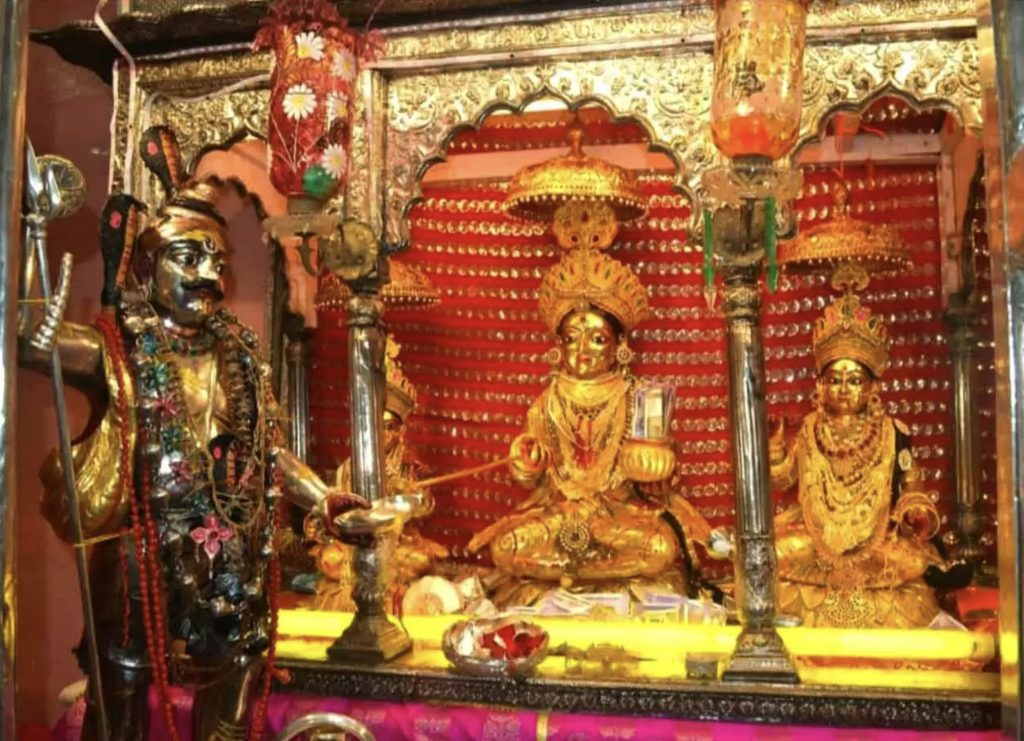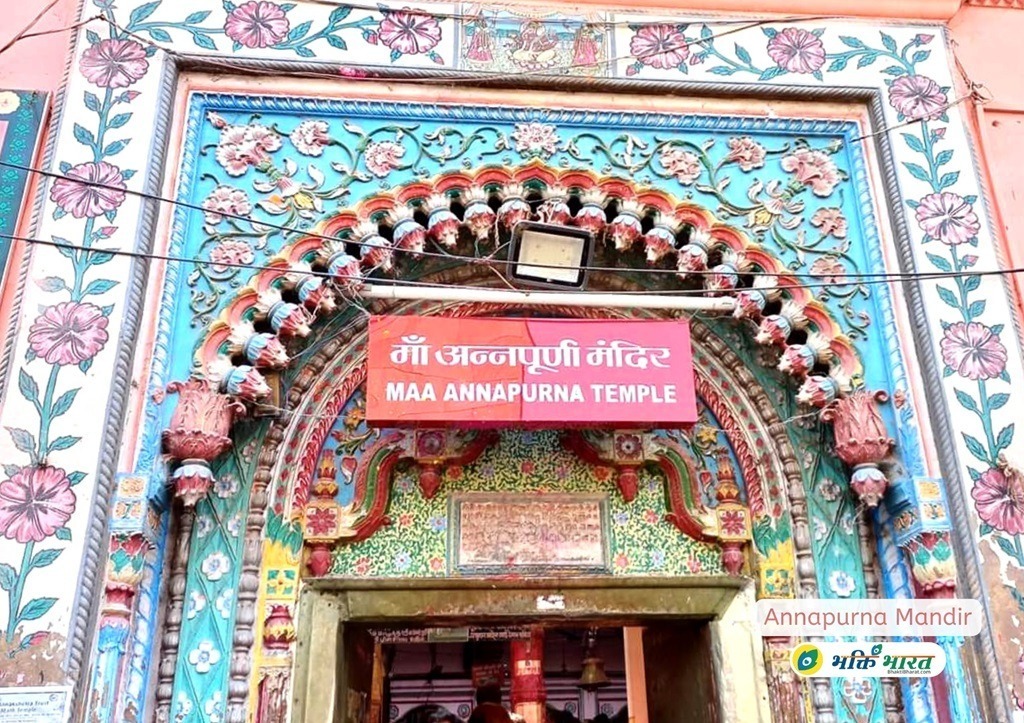When one utters the name of Kashi, the sacred city of light, the mind bows in reverence before Bhagwan Vishwanath, Mata Vishalakshi, the ever-nurturing Annapurneshwari, and the fierce guardian, Shri Kalabhairav. Among the countless hymns sung in devotion to these deities, the Annapoorna Stotram composed by Jagadguru Shri Adi Shankaracharya holds a place of deep significance. It is not merely a composition—it is a call from the devotee’s soul to the Divine Mother, who nourishes both body and spirit.
In its opening verse, the devotee offers salutations to Mata Annapurna, the embodiment of eternal bliss and divine grace. She, who bestows both boons and fearlessness, is described as the fountain of beauty—not of mere form, but of soul-purifying inner radiance. With her presence, the impurities and afflictions of the world are dissolved. She is visibly present in Kashi as the consort of Maheshwar, and her descent from the noble lineage of the Himalayas sanctifies the divine order.

The verse ends with a most humble plea: “O Annapurna, source of compassion, bestow upon us the sacred alms of your mercy.” This is no ordinary alms, but a divine nourishment that sustains life itself.
A later verse deepens this prayer. The devotee addresses her as the beloved of Bhagwan Shankara, ever-complete, ever-abundant. The plea here is for wisdom and detachment—Jñāna and Vairāgya—without which no spiritual journey can begin.
Thus, each of the twelve verses is not only to be recited but contemplated. For in them lies the path to divine fulfillment. A seeker must chant the complete stotram daily, letting every word cleanse, uplift, and nourish the soul.
In the sacred city of Kashi, nestled near the sanctum of Shri Vishwanath, stands the revered Annapurna Devi Mandir—also called Annapurna Mata Mandir or simply Annapurna Mandir. This hallowed shrine is dedicated to Mata Annapurna, the divine embodiment of nourishment and abundance, a compassionate form of Devi Parvati Herself.

The present-day temple was built in the 18th century under the patronage of Maratha Peshwa Bajirao. Constructed in the traditional Nagara architectural style, the temple features a sanctum crowned by a large pillared mandapa, within which rests a graceful depiction of Mata Annapurna. The temple enshrines two divine images of the goddess—one in radiant gold and the other in brass. While the brass idol is available for daily darshan, the golden form is unveiled only once a year during the auspicious occasion of Annakut.
Within the temple courtyard, one also finds the sacred images of Maa Kali, Bhagwan Narasimha, and the divine couple, Shiva-Parvati. Tradition holds that it was within this very temple that Jagadguru Adi Shankaracharya composed the Annapurna Stotra, invoking the Mother with the words: “Annapurne Sadapurne Shankara Prana Vallabhe, Jñāna Vairāgya Siddhyartham Bhikṣām Dehi Cha Parvati.” Here, Bhagwan Shankara Himself is seen humbly seeking the alms of wisdom and detachment from the Divine Mother.

Goddess Annapurna is revered as the divine nurturer across the three worlds, the sacred mother of nourishment. It is believed that the benevolent Mother herself once provided sustenance to Lord Shiva. In the temple dedicated to her, sacred depictions adorn the walls, including the divine image of Goddess Kalchhi captured in eternal artistry. The temple holds a unique annual observance during the Annakoot festival when the resplendent golden statue of Maa Annapurna is unveiled for public viewing. On this auspicious day, devotees are blessed with the extraordinary sight of her celestial form.
A cherished legend associated with this sacred site recounts a time of devastating famine in Kashi. In that dire hour, the entire city suffered, and many perished from hunger. Even Mahadev, faced with such overwhelming plight, sought divine guidance. In deep meditation, he discerned that only Mother Annapurna could restore balance and alleviate the suffering. Hence, Lord Shiva approached her, humbly requesting her generous alms. Moved by his devotion, the Mother solemnly vowed that from that day forward, no soul in Kashi would endure hunger. She declared that the alleviation of human distress would come with the distribution of her sacred treasures during her divine visits. Since that time, on the day of Annakoot, cherished offerings are bestowed upon the faithful, ensuring that those who receive them never lack in provision.
In sacred tradition, Annapurna Devi, also honored as Bhavani Devi, is venerated with deep ritualistic observance in Kashi. Devotees are instructed to circumambulate her sacred image one hundred and eight times during the Shukla Paksha Ashtami of the Chaitra month. This act of profound devotion is believed to grant the spiritual merit equivalent to having journeyed over all the mountains, traversed the seas, and visited all divine ashrams throughout the world. Moreover, the faithful are encouraged to perform eight daily circumambulations in worship of Annapurna. In times of hardship within the city, a sincere prayer to Maa Annapurna is deemed the remedy, promising the removal of obstacles and the bestowal of abundant prosperity.
Additionally, Goddess Gauri manifests in her nine revered forms in Kashi, a phenomenon marked by the presence of nine distinct temples. These include Mukhnirmalika Gauri, Jyeshta Gauri, Saubhagya Gauri, Shringar Gauri, Vishalakshi Gauri, Lalita Gauri, Bhavani Gauri, Mangla Gauri, and Mahalaxmi Gauri. It is believed that receiving the divine darshan of Gauri during the Vasantik Navratri bestows upon devotees happiness, prosperity, and spiritual purity, with Bhavani Gauri being honored on the seventh day at the premises of Annapurna Devi.

